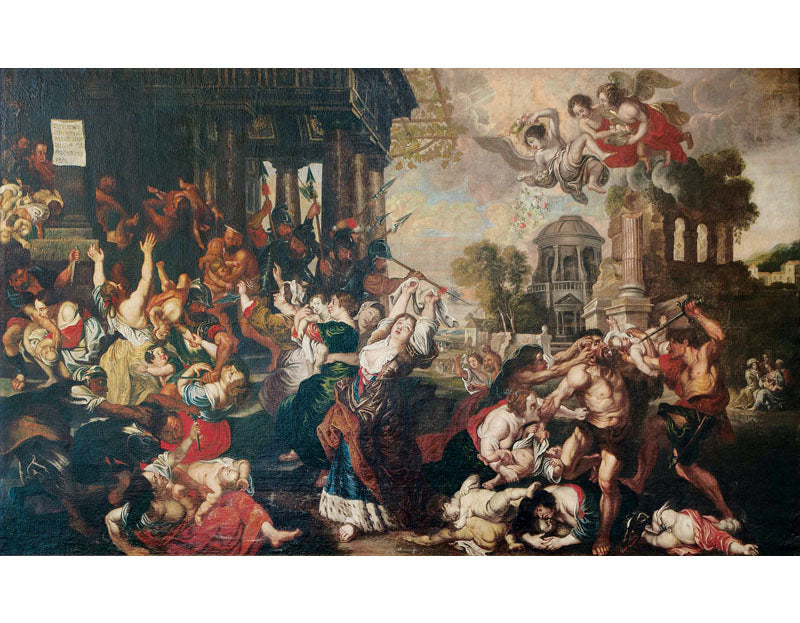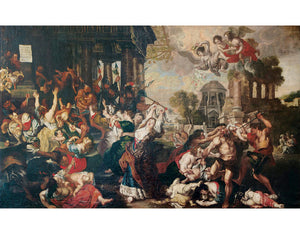The Massacre of the Innocents
Peter Paul Rubens
Artwork Details
Artwork Description
Title:The Massacre of the Innocents
Artist
Peter Paul Rubens
Date
n.d.
Medium:
Oil on canvas
Dimensions
61.8 x 102.8 in (157 x 261 cm)
1. Artwork Identification
This monumental oil on canvas, The Massacre of the Innocents, is attributed to Peter Paul Rubens (1577–1640), one of the foremost figures of Baroque painting. The composition depicts the biblical massacre ordered by King Herod as recounted in the Gospel of Matthew, rendered with Rubens’s unparalleled command of anatomical vigor, emotional intensity, and dramatic composition. The sprawling scene unfolds in tumultuous waves of interlocking bodies—mothers in anguish, soldiers in violent motion, and infants caught in a maelstrom of terror and lamentation. Architectural elements and celestial beings heighten the theatrical narrative. The painting is in very good condition.
2. Artistic Style and Influences
Rubens was the master of Baroque dynamism, and The Massacre of the Innocents embodies his mature style: swirling energy, muscular figuration, and chiaroscuro used to deepen emotional resonance. The dense composition and expressive gestures evoke the influence of Michelangelo and Caravaggio, while the painting’s sumptuous surfaces, rich palette, and theatrical grandeur reflect Rubens’s own innovations. He melded classical ideals with raw human passion, transforming a tragic biblical episode into a sweeping visual opera of pathos and power.
3. Historical Context
Peter Paul Rubens rose to prominence in the early 17th century, working across the courts of Europe and serving as both painter and diplomat. This painting's theme—the brutal slaughter of infants by Herod’s order—served as a powerful allegory of tyranny and martyrdom, especially potent in post-Reformation Europe. Commissioned for religious and civic institutions alike, such scenes conveyed both theological gravitas and political resonance. Rubens painted multiple versions of The Massacre of the Innocents, and this composition remains among the most emotionally arresting and compositionally complex narratives in his oeuvre.
4. Provenance
Provenance documentation can be provided upon contact.
5. Condition and Conservation
The painting is in very good condition. The canvas surface exhibits minor, expected signs of aging such as light craquelure and minor restoration in pigment-dense areas, but the overall structural and chromatic integrity remains sound. The composition reads clearly, with preserved luminosity and excellent legibility across all narrative zones. No major conservation interventions are currently required.
6. Artistic Significance
The Massacre of the Innocents stands among Rubens’s most powerful achievements in narrative painting, synthesizing classical inspiration, Baroque theatrics, and deep psychological insight. It is a benchmark of emotional intensity in European art and a defining image of the Counter-Reformation period. Rubens’s contribution to Western painting cannot be overstated; he shaped the visual culture of his time and exerted lasting influence across centuries—from Van Dyck and Velázquez to Delacroix and beyond. This work embodies Rubens’s profound ability to transmute violence and grief into sublime artistic form.


